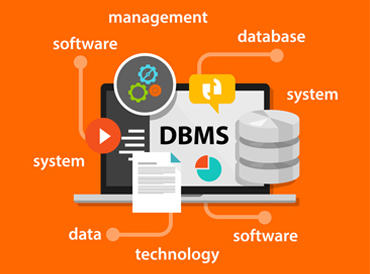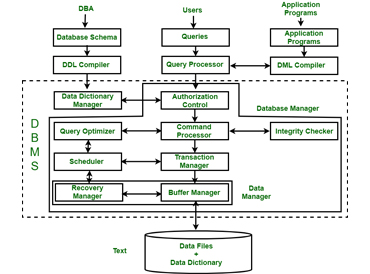One of the most significant factors influencing application performance is database design. In database design, we organize data efficiently based on product workflows and future roadmaps. A database is a collection of bulk information that has been stored in a framework to make it easier to find and explore relevant information. A well-designed database contains accurate data for analysis and reporting. A data model is the result of a database design exercise. It represents all the system’s objects, entities, attributes, relationships, and constraints. Data models can be classified into two types: logical and physical. The physical data model is related to the database’s actual implementation details. In contrast, the logical data model abstracts away the implementation details.
Understanding the difficult subject of the database seems daunting to students. That is why students ask who can help me with my database assignment? Is there anyone who can assist me with my database homework? Well! Many academic writing services offer assignments help to the students who are finding it hard to complete their DBMS Assignments. If you need DBMS assignment help, hire a reliable DBMS homework help expert and say bye to your academic worries. Students who chose this discipline come across many assignments. Your professor assigns you multiple assignments related to database design. Due to a lack of knowledge about database design, students end up composing poor assignments. Let’s discuss in detail the five-step of database design.
What is Database Design?
Database design steps aid in the creation, implementation, and maintain a company’s data management systems. A well-designed database is easy to maintain, improve data consistency, and reduces disc storage space requirements. The database designer determines how the data elements must be related and what information must be stored. The goal of database design is to create physical and logical models of proposed database system designs. The database design can be critical in terms of efficiently executing queries and ensuring information consistency. Let’s discuss five database design steps in detail.
A well-structured database design is one used for planning, storing, and managing information. To ensure data accuracy, create a database that stores only relevant and valuable information. A well-designed database is required for information consistency, eliminating redundant data, executing queries, and improving database performance.
All You Need to Know About Database Design Steps

Here is the database design process that you need to know if you are studying DBMS. When designing a database, the first question to consider is how you will specify the database’s structure. Generally, database design begins with determining the purpose of your database. The pertinent information is then gathered and organized into tables. Next, you have to make an efficient database design. For that, you need to analyse keys and analyse the relationships between tables. After refining the tables, the final step is to apply normalization rules for table standardization. The steps in the database design process are as follows:
The Purpose of Your Database
The first step in database design is to decide what your database’s purpose will be. For example, if you run an online business, you can create a customer database that keeps a list of consumer information to generate emails and reports. As a result, comprehending the significance of a database is critical. It will assist you in staying focused on your objectives when making important decisions.
Database Structure- Building Block of Database Design

The database structure lays out the representation of your database. Within a database, related data is organized into tables, each of which contains rows and columns. A record is a name given to each row of a table. Records consist of information about something or someone, such as a specific customer. In Contrast! Columns contain information that appears in each record, such as the addresses of all the customers listed in the table. Finally, you must determine which attribute or attributes, if any, will serve as the primary key for each table.
Identify Entities & Attributes
The second database design process is the identification of entities and attributes. An entity is a specific type of person, object, or thing in the database. It could be a physical object, such as a person, a car, employee, or a conceptual object, such as a company, a job, or a project. Each entity has characteristics that describe it. In the database, we name these characteristic attributes.
Once the purpose of your database is decided, this information is used to make entities and attributes. This step also determines which attributes will serve as identifiers in the entities. Based on the information, identify the objects that are needed in the database process. Entities are described by their attributes in the same way that business objects are described by their characteristics. When we represent an entity in a database, we store the attributes of that entity.
Identify Relationships In a database Design
The next database design step is the identification of the relationships between entities using the business workflows documented during the requirement gathering phase. Four types of database relationships exist between the entities. Consider A and B are two arbitrary entities.
- One-to-One
- One-Many
- Many-to-One
- Many-to-Many
One to one means that one record in A corresponds to no more than one record in B. One-to-many means a single record in A corresponds to a large number of records in B. On the other hand, many-to-one means that many records in A correspond to no more than one record in B. Lastly, in a many-to-many relationship, several records in A correspond to several records in B.
Create an Entity Relationship Diagram
The ER diagram is the next step after entities, attributes, and entity relationships have been defined. Entity Relationship Diagram (ER Diagram), also known as ERD, is a diagram that depicts the relationship of entity sets stored in a database. ER diagrams explain the logical structure of a database. Entities, attributes, and relationships are the three basic concepts upon which ER diagrams are built. Entity-relationship diagrams (ERDs) aid in the understanding of relationships between entities within a system, such as customers, products, or order IDs.
The entity Relationship Model (ER Model) is a high-level conceptual data model diagram. The ER model aids in the systematic analysis of data requirements to create a well-designed database. The ER Model represents real-world entities and their interrelationships.
Acquire DBMS Assignment Help to Impress Your Professor

We understand how difficult it is for students to compose database assignments. The database is a complicated subject, and it seems quite challenging to students because of the difficult concepts. Students worry about their assignments because of the tight deadline and difficulty in understanding the subject matter. Your professor assigns you many database assignments, so you can have a better grip on the subject matter. But due to many reasons, students struggle with their assignment completion. That is why they ask for homework help from expert writers who have vast industry knowledge. Many assignment help services are offering database assignment solutions to the students struggling with their homework.
Has your professor assigned you homework related to database design? Are you finding it hard to complete your DBMS assignment? If yes, you need to hire a professional homework help service provider who has a broad knowledge of the discipline. Assignment submission plays a significant role in the overall academic performance of the students. That is why students feel troubled when they have to submit assignments. Getting help from professional academic writers can improve your academic grades. All you need is to find a reliable homework helper that best suits your homework requirements. Tell your university guidelines to them and let them compose your assignments. Database assignments by adept writers are a good way to impress your professor and can improve your academic career.
Few Final Words
If you have undertaken computer sciences as a major subject, you will get many database assignments. Indeed, database assignments are complex. Students who opt for this discipline struggle with DBMS assignment completion. The one thing that creates a hurdle in writing database assignments is the lack of knowledge about database design. Earlier in this blog, I have discussed the database design steps. The five database design steps include the purpose of your business, database structure, attributes and entities identification, relationship building, and creation of ERD. You can learn the basics of database design through this effective guide. Still, if you are finding it difficult to compose DBMS assignments, hire an online database homework helper who can write a high-quality assignment. By getting online help from adept writers, you will get a boost in your academic performance.
